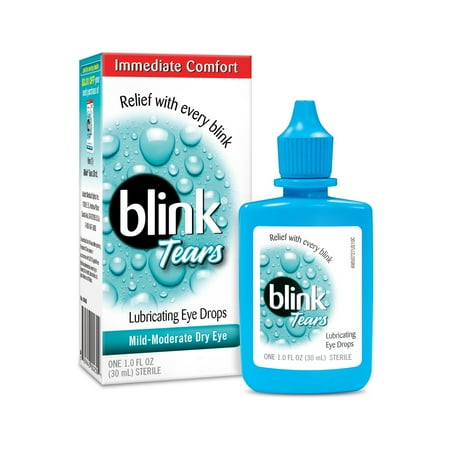 Whereas some issues are incredibly widespread, hotly-debated, and quite renowned, others tend to slip under the public’s radar. These are daily, banal issues that are often unrecognized but make a significant difference in our everyday lives. One such issue on which I hope to shed more light is a trend I have noticed recently, both at my local CVS or Walgreens and other pharmacies:
Whereas some issues are incredibly widespread, hotly-debated, and quite renowned, others tend to slip under the public’s radar. These are daily, banal issues that are often unrecognized but make a significant difference in our everyday lives. One such issue on which I hope to shed more light is a trend I have noticed recently, both at my local CVS or Walgreens and other pharmacies:
Facial care products are becoming increasingly expensive – and decreasingly affordable as a result.
While I was in middle school, I began to feel dryness in my eyes. It was nothing major, but my ophthalmologist recommended that I begin using eye drops. Thus, I promptly abided by his instructions and initiated the process of providing my dry eyes with some much-needed relief. A few years later, my ophthalmologist told me that, with 20/25 vision in my right eye and 20/30 in my left, I needed glasses for a slight correction. I didn’t particularly mind this prescription. Indeed, I distinctly remember the moment I first looked out of the doctor’s office into a nearby intersection while wearing my glasses. The slight adjustment that provided made all the difference in the world.
Today, I continue to wear my glasses while looking at screens and for reading, or simply when my eyes are tired. In fact, I’m wearing my glasses right now while composing this blog post! In addition, I am certain that I am not the only person among my peers who wears glasses intermittently, for they are quite a valuable asset. However, while one typically pays for his or her glasses all at once, facial and eye care products demand a more repetitive, long-lasting, and altogether costly commitment.
Typically, when I visit CVS Pharmacy, I purchase a small bottle of Blink Tears or Blink Gel Tears for about $10 to $12. However, given that these small bottles run out quite fast, I often opt to bypass the traditional small bottle and buy one larger bottle for $18, or six additional dollars.
The aspect of this purchase that perturbs me is that, given the daily, habitual pace at which I use up eye drops, I am forced to return to the pharmacy ever two or three weeks, approximately. My routine, therefore, puts a significant dent in my wallet!
There are 52 weeks in one year. I, for one, hail from a middle-class family, and it is sometimes difficult for me to budget medical and health expenses for myself – of course, my parents take care of the rest, for the moment. Theoretically, if I were to return to CVS every three weeks to spend another $18 on a large bottle of Blink Tears, then in one year (52 weeks divided by 3 weeks per eye drop bottle is 17.33; and then 17.33 x $18), I would spend a whopping $312 on eye drops alone!
I address this concern from a personal standpoint because I know all too well that I am not the only one struggling to make ends meet. As a college student, I often face the harsh reality that money is at a premium.
This leads me to my second facial care product: acne cream. My bedtime routine consists of eye drops, acne cream, and hand/skin cream nightly, and a nice, refreshing drink of water to rehydrate before enjoying several hours of peaceful slumber. I typically take a bit longer to empty my acne cream than the eye drops simply because I do not need to use all that much to achieve the desired effect. The time can vary, however, because oftentimes the tubes of cream are quite small.
Nevertheless, acne cream is another expense that must be accounted for. Depending on the brand, it can cost anywhere between $8 and $10.
In hindsight, I believe I buy acne cream at least as often, and probably a bit more often, than eye drops. Thus, a fair estimate of the yearly cost of acne cream would be $350-$375. For the aforementioned hand cream, which I use predominantly during the winter months but also year-round in very large bottles, I probably pay about $250-$300. In all, I believe I spend at least $1,000 on all my face and hygienical needs; quite a burden, indeed!
I say the following with all due respect and humility, but in this regard, I am glad I am not a girl! I cannot imagine what financial hardships my female counterparts must encounter in their pursuit of quality skin care and hygiene. Whether it be overpriced brand perfume, Neutrogena skin care, or other products, my “plight,” so to speak, completely pales when compared to female health costs! This list omits makeup and hair products, too!
In sum, the everyday American evidently cannot resemble Marilyn Monroe or George Clooney simply because he or she – indeed, we – are not opulent enough to be able to afford the stylistic luxuries that can be found in a pharmacy! This is not an effort on my part to condescend on American society, but rather a commentary on my own financial challenges as they relate to my peers and fellow citizens.
Pharmaceutical companies and their subdivisions are well aware that the average American cannot avoid the pharmacy, for he or she must purchase proper bodily care. Thus, I ultimately ask: instead of taking advantage of us, could you, the pharmaceutical companies of America, agree to cater to our needs and negotiate with us?
Such a change would be greatly appreciated.
Image Credit:
https://www.walmart.com/ip/Blink-Tears-Lubricating-Eye-Drops-Mild-Moderate-Dry-Eye-1-Fl-Oz/10416207






